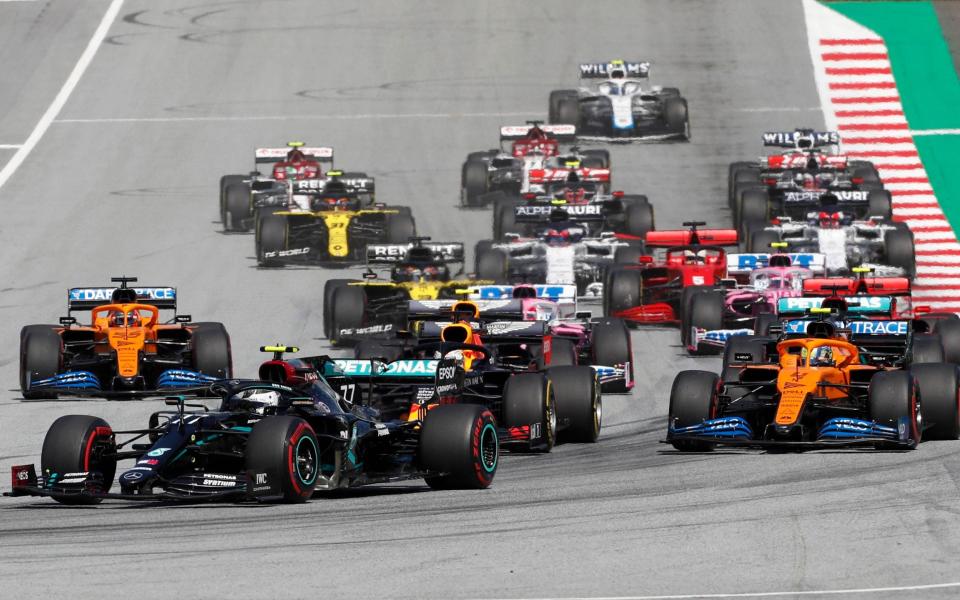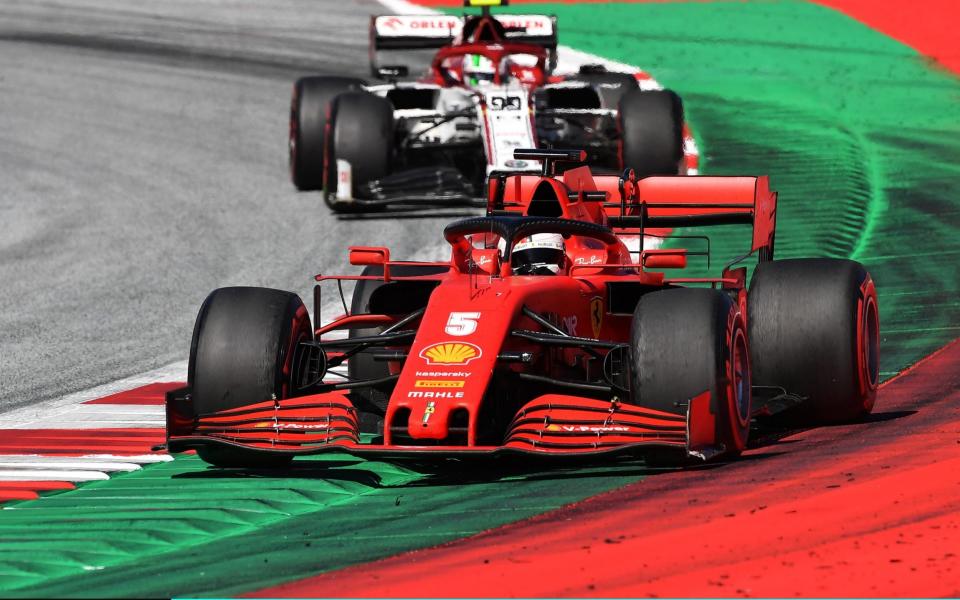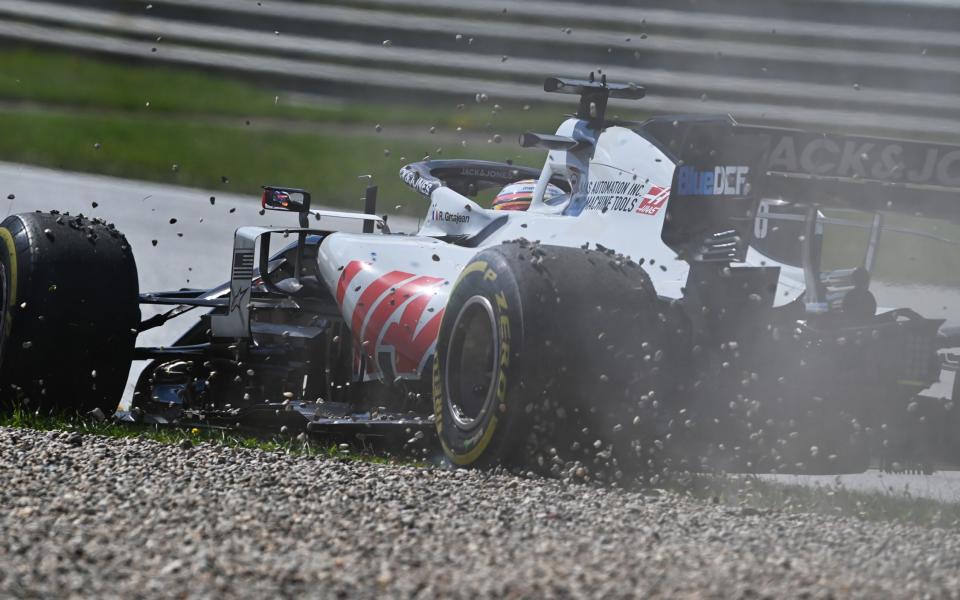Rating the F1 teams after the Austrian GP: Are Ferrari in the midfield and are Racing Point the real deal?

The 2020 F1 season finally got going in Austria on Sunday and, after looking much like a processional and professional Mercedes 1-2, there was a chunk of late drama and chaos. Mercedes ran out victors in the end but it was, in some ways, a fortunate win.
Given the huge lack of reliability, it is difficult to really understand the true pecking order after one race. But now that we've had a decent amount of competitive running, it is a little easier to see the overall picture.
We sifted through the numbers and data to work out who the real winners and losers of F1's opening race were, and what this means for the season ahead. There are still plenty of unknowns, but now there is a degree of clarity.
As well as qualifying and race performance, we looked at a team's overall position as well as their progress relative to a) their average last season and b) the first race last year. We have combined this to create a progress percentage on their raw pace. The overall rankings, then, are as much a chart of improvement as anything, rather than the "correct" order. So, who should be quietly confident and who is facing a long season ahead?
10. Ferrari

It does not take a great amount of statistical analysis to work out that Ferrari are facing a nightmare season. But the closer you look at their numbers, the more you see that they have a mountain to climb to even close up to Red Bull, never mind Mercedes.
In 12 months, they have lost almost a second in qualifying at this track and have gone from the quickest on raw pace to the fifth fastest. Even taking into account a sluggish opening round last year, Ferrari have fallen massively backwards. Back then they were seven-tenths (or 0.88 per cent) off Mercedes in qualifying trim but now they have regressed even further (1.56 per cent) away.
How has this happened? Well, since the FIA clarified a regulation relating to power units towards the end of last season, Ferrari lost their top speed advantage. Team boss Mattia Binotto reckoned that they were losing 0.7 seconds to Mercedes on the straights in Austria and that seems to tally. But that does not explain everything, meaning the aerodynamic performance of the SF1000 is poor, too. Though Leclerc enjoyed an unexpected late charge to second, Vettel struggled to keep his car pointing in the right direction all day. The upgrades cannot come soon enough, but will it be enough to move them out of the mire?
Progress vs 2019: -1.92% (9th)
9. Alfa Romeo
The Swiss/Italian team began 2019 strongly, largely thanks to the performances of Kimi Raikkonen and a tight midfield. After starting last year as the sixth quickest team and finishing it as the seventh fastest (and only a tad behind fifth-best, Renault) on raw pace, they begin 2020 as the slowest of the lot. No team has gone backwards as much from last year. It would be a shame to see Raikkonen struggling at the back.
Antonio Giovinazzi came away with two points for ninth, which is some comfort, but it may take similarly unpredictable circumstances for them to trouble the top 10 in the near future. In qualifying they were quickest in the speed traps, which suggests they were trying to counter the Ferrari engine's lack of power with a low downforce setup. It did not work, though, so it will be interesting to see how they approach round two.
Progress vs 2019: -2.66% (10th)
8. Haas
Before the start of the season I said that Haas might find the VF-20 a more consistent performer but that the big worry would be that it is consistently slow. Well, that is how it turned out in Austria, with Kevin Magnussen out in Q1 and Romain Grosjean only narrowly through in 15th. It did not get much better on Sunday, with both men retiring with brake failures.

For all their inconsistency in 2018 and 2019, Austria has been Haas's strongest track, having been the fourth quickest team in both of those years. This initial showing has to be a real concern. It seems that it is no coincidence that the three teams who have all moved backwards the most (in absolute as well as relative terms) are powered by Ferrari engines.
The first batch of cars in the midfield (Red Bull, McLaren, Racing Point, Ferrari and to a lesser extent Renault) are fairly tight — with AlphaTauri a little further back. The problem is the gap from Haas to Renault, which is almost as much as the gap from McLaren to AlphaTauri. It looks another difficult season for Guenther Steiner and co.
Progress vs 2019: -1.80% (8th)
7. AlphaTauri
Pierre Gasly's seventh place was a bonus for the team formerly known as Toro Rosso, after a solid start. They have made a little progress in relative terms but at the moment are as detached from the cars in front of them as they are from the teams behind. Still, that is pretty much where you would expect them to be.
There is obvious room for improvement, but it could be a season of getting into Q2 but struggling to make Q3. They do, however, have two decent drivers in Daniil Kvyat and Gasly, who have shown they can deliver the goods on race day. They should feel reasonably satisfied with the car they've produced.
Progress vs 2019: +0.37% (5th)

6. Red Bull
It is difficult to know what to make of Red Bull's Austrian Grand Prix. The car looked a handful for both drivers in practice, it was much closer to the Racing Points and McLarens than the Mercedes in qualifying but on Sunday they had not one but two good chances (granted Albon's charge was largely down to a safety car) for victory, despite Mercedes looking comfortable.
In the opening exchanges, Max Verstappen held pace with Valtteri Bottas, but his retirement after 11 laps meant we never found out the true potential of the RB16 in race trim. Could he have challenged for victory from there? He would have been in the picture, almost certainly.
It is still difficult to think of them as genuine championship contenders, though, and they start the season pretty much where they began and ended last year. There may be progress from 2019 to 2020 but we have yet to see it. That said, despite their lack of raw pace and pointless weekend, I cannot see Verstappen being dragged into the midfield battle with Ferrari — Albon may be another issue.
Progress vs 2019: +0.02% (7th)
5. Renault
A few months ago, if you had told Renault that they would be three tenths of a second away from the leading Ferrari, they would have been delighted. Unfortunately for both teams, the reality is a little less exciting — they are both further back than they would want.
The positive for Renault, though, is that they appear to have improved on their pace overall (a good chunk) and from early 2019 (a little). The negative is that Racing Point and McLaren seem to have jumped ahead of them. That picture may change slightly, though perhaps not greatly. Still, they rank fourth in our progress rankings and although they started slowly last year, they found decent pace towards the end of it. Perhaps it could be the same in 2020.
Progress vs 2019: +1.01% (4th)

4. Williams
Williams are the second most improved team in the field and have made great strides. In fairness, they had such a rotten 2019 that it would be difficult to go anywhere but forward, but their progress in relative and absolute terms is impressive. For the first time since Brazil 2018, they were not the slowest team in qualifying.
The caveat here is that they are unlikely to be regular contenders for points and it will still be an achievement to make it into Q2, but with George Russell in his second year in F1, there are plenty of reasons to be optimistic. Hopefully he now has a car underneath him that is capable of showing his talent.
Beating Alfa Romeo and Haas could be an attainable target for the team and points could be a possibility on the odd weekend. A heartening performance at a difficult time.
Progress vs 2019: +2.07% (2nd)
3. Mercedes

Like Red Bull, Mercedes are thereabouts on performance with last year. But being the quickest in 2019, (and 2018, 2017, 2016...etc.) that is absolutely fine. In qualifying trim they were unbeatable and, despite gearbox sensor issues threatening to derail their afternoon, their race pace looked excellent, too. We do not know how much they were holding back but even with the extra caution that Lewis Hamilton and Valtteri Bottas had to show, they still looked to have the Red Bull beaten.
Visually, the car looked stuck to the track in the final sweep of right-handers, both drivers showing full commitment and confidence at all times. It is hard to pick out a performance weakness at the moment and that should be extremely worrying for everyone else, even if the sensor issues might be a concern for the second race at the Red Bull Ring.
Progress vs 2019: +0.18% (6th)
2. McLaren
McLaren's trajectory since the end of a chastening 2018 has been rapid. Back then, they finished as the ninth quickest team, ahead of only Williams. In 2019 they ended their long wait for a podium and finished with by far their highest points total since 2014. This year should have primarily been about consolidating their spot as leaders of the midfield, but a reshuffling of the order has perhaps put them within reach of loftier targets.
Hitting us right in the feels. 🤩#AustrianGP 🇦🇹 pic.twitter.com/NVtZ1tSLuG
— McLaren (@McLarenF1) July 6, 2020
Lando Norris qualifying fourth showed the raw pace was there, making significant progress on both their performance from last year's opening Grand Prix as well as their season average. After a slow first few laps, their showing on Sunday proved that the race pace is there, too, with Norris's podium and Carlos Sainz's fifth place giving them their highest points total; in a single race (26) since the opening round of 2014.
Progress vs 2019: +1.71% (3rd)
1. Racing Point

It may seem strange to have a team who clearly under-performed in Austria placed so highly. But nobody is more improved than Racing Point, whatever you think of the 2020 car's similarity to last year's Mercedes. Sergio Perez's sixth place was a poor return for a team who should have delivered more, but I believe their overall potential was hidden in a chaotic opening round.
Saturday was decent enough, with both cars through to Q3, but neither Perez nor Lance Stroll are renowned as the finest qualifiers, their prowess is on track on race day. Unfortunately, Racing Point chose not to pit Perez for fresh tyres under the Safety Car on lap 52. Had they done so he would have had a good chance of a podium or even more. I would back them to bring home a hefty haul later this week.
Their general direction has been to start slowly before making steady progress — they ended the first chunk of 2019 as the ninth quickest team on raw pace but finished it in sixth. If they can repeat that pattern they should be confident of leading the midfield, especially being led by the underrated Perez. Given Ferrari's woes, that could mean being the third-best team.
Progress vs 2019: +2.07 (1st)

 Yahoo Sport
Yahoo Sport 





































